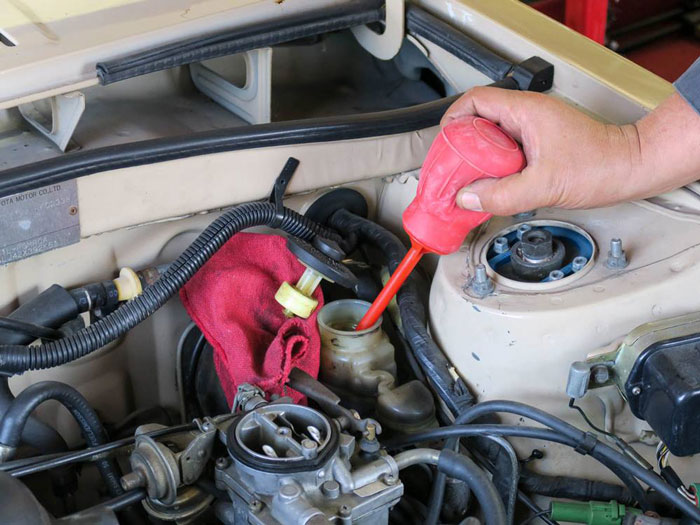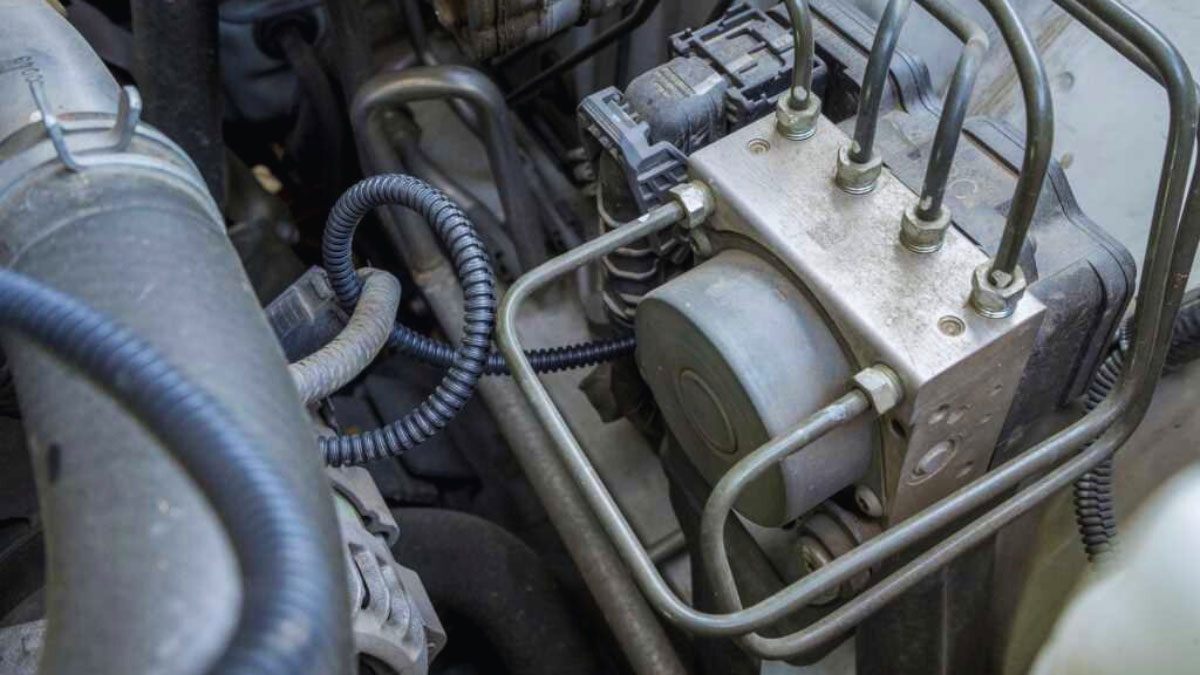So, picture this: you’re cruising down the road, feeling like the king of the world, when suddenly your ABS light starts flashing like a disco ball at a party. Panic mode, right? But fear not, my friends, because I’ve got some tricks up my sleeve on how to bleed that ABS module without needing a fancy scan tool.
When it comes to dealing with car troubles, I like to think of myself as a bit of a MacGyver. Who needs high-tech gadgets when you’ve got some old-school know-how and a touch of DIY spirit? I’ll show you how to get that ABS system back in line without breaking a sweat.
So, buckle up and get ready to jump into the world of ABS module bleeding – no scan tool required. Trust me, with a dash of creativity and a sprinkle of elbow grease, you’ll be back on the road with a smile on your face in no time.
Understanding ABS Module Bleeding
ABS module bleeding is crucial for maintaining the integrity and functionality of your car’s brake system. You may not always have a scan tool handy, but fear not; good old-fashioned DIY methods are here to save the day!

Why It’s Necessary to Bleed ABS Modules
When air enters the ABS module, it can wreak havoc on your braking system. Think of it as inviting a mischievous gremlin to play with your brakes – definitely not ideal! Bleeding the ABS module helps expel any trapped air, ensuring your brakes work flawlessly and keeping you safe on the road.
Essential Preparations
Before diving into the process of bleeding the ABS module without a scan tool, let’s make sure we have everything we need and understand the safety precautions involved.
Required Materials and Tools
- Jack and Jack Stands: Elevate your car safely to access the braking system. No acrobatics necessary; we’re working on the ABS, not auditioning for Cirque du Soleil.
- Wrench or Spanner: To loosen those stubborn brake bleeder valves. Don’t worry; we’re not removing bolts from Fort Knox.
- Clear Tubing: Think of this as the ABS module’s straw – it helps direct the air bubbles out of the system. Sipping drinks with a straw may be fun; sipping brake fluid, not so much.
- Brake Fluid: The lifeblood of your braking system. Make sure it’s compatible with your car; we don’t want any brake fluid identity crises happening.
- Assistant (Optional): Having a pal to help pump the brakes can make the process smoother. Plus, everything’s more fun with a buddy, right?
- Eye Protection: Protect those peepers from any unexpected brake fluid splashes. Think of it as fashionable safety goggles – safety first, style second.
- Gloves: Keep those hands clean and chemical-free. Think of them as your trusty brake fluid-resistant gloves, not dissimilar to a superhero’s impenetrable shield.
- Well-Ventilated Area: Let’s not turn this into a gas chamber. Work in a place with some fresh air so you can breathe easy (literally).
- Secure Vehicle: Ensure your car is stable on the jack stands. We’re fixing brakes, not playing Jenga with cars.
- Fire Extinguisher (Optional): Just in case things get a bit too hot to handle. It’s better to have it and not need it than need it and not have it.
Now that we’ve covered the essentials and safety basics, we’re ready to tackle bleeding the ABS module without a scan tool! Let’s get those brakes feeling brand new again.
Bleeding the ABS Module Without a Scan Tool
So, you’re ready to tackle bleeding the ABS module without a scan tool. Here are the steps you should follow to get this job done without breaking a sweat.
Step 1: Locate the Bleeder Valves
- Position: First things first, make sure your car is securely parked on a level surface. Safety first, folks!
- Identification: Now, let’s find those sneaky bleeder valves. You can typically locate them near the brake calipers. Get down low and give them a good look to ensure you’re working on the right part.
- Prep: Before you get your hands dirty, grab a wrench that fits the bleeder valve snugly. We don’t want any slipping incidents here!
Step 2: Flush the Old Brake Fluid
- Clear Tubing Setup: Grab that clear tubing, and let’s set up a drain system. Attach one end to the bleeder valve and the other into a container to catch the old fluid.
- Jack it Up: It’s time to lift the car using a jack. Give yourself some extra room to work comfortably under there.
- Release and Pump: Loosen the bleeder valve slightly with your trusty wrench, then have a helpful assistant press the brake pedal a few times. Watch that old fluid flow out!
- Repeat the Process: Keep going until you see clean fluid coming out consistently. This might take a few rounds, so stay patient and focused.
- Tighten Up: Once you’re satisfied with the fluid clarity, tighten that bleeder valve back up. No leaks allowed!
- Check and Double Check: Give your brakes a test to ensure everything is in top-notch condition. Safety check complete!
Troubleshooting Common Issues
Dealing With Air Trapped in the ABS Module
If you encounter pesky air bubbles trapped in your ABS module, don’t fret! Firstly, ensure that your car is on level ground to prevent any further mishaps. To address this issue, you can try the following steps:
- Start by loosening the bleeder valves to release the air slowly.
- Next, gently pump the brakes a few times to help push the air out.
- Keep an eye out for any escaping air bubbles and continue the process until you no longer see any.
Leaks and Loose Valves
Leaking brake fluid or loose valves in the ABS system can throw a wrench into your bleeding process. Fear not, for I have some tips up my sleeves! To tackle leaks and loose valves, follow these simple guidelines:
- Thoroughly inspect all connections for signs of leakage.
- Tighten any loose valves or connections to prevent further leaks.
- If you notice significant leaks, it’s best to replace the faulty components promptly.
Conclusion
Well, folks, there you have it! Bleeding your ABS module without a fancy scan tool can be a piece of cake if you follow my ingenious DIY tips. Remember, when those air bubbles start causing trouble, just loosen those bleeder valves and give your brakes a good workout. Keep an eye out for leaks and loose valves – they’re sneaky little troublemakers. And if things get really messy, don’t hesitate to swap out any dodgy components. With a bit of patience and a sprinkle of know-how, you’ll have your ABS module purring like a kitten in no time. Happy tinkering, and may the brake force be with you!
Frequently Asked Questions
What special tool is needed for bleeding the ABS module?
To properly bleed the ABS module, a scan tool is required to activate the system’s hydraulic pump while bleeding the brakes to remove any trapped air.
Can I reset the ABS module by disconnecting the battery?
While the best way to reset the ABS light is with an OBDII scan tool, disconnecting the battery may also clear the codes in some cases.
How can I bleed the ABS module on a Silverado without a scan tool?
Without a scan tool, open the front bleeder screw at the modulator, bleed the modulator, close the screw, then bleed both front brakes starting with the right one.
What steps can I take to reset the ABS module without a scan tool?
If the ABS light remains illuminated, turn off your engine, wait a few moments, then restart the engine to check if the light resets without a scan tool.
What does the code U0121 indicate for the ABS module?
The code U0121 indicates a communication system issue affecting the ABS control module, causing problems with the Anti-Lock Brake System due to errors in communication circuits.

